Harry Thaw, Millionaire Murderer
Harry Thaw was born into privilege. From childhood he was told that he was special. Because he was rich, he was assured, he was entitled to anything he wanted. Rules were for the poor – he was above them. He believed that. And, unfortunately, he was right.
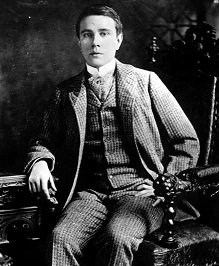
He was born Harry Kendall Thaw in 1871, the eldest surviving son of William Thaw’s second marriage, to Mary Sibbet Copley. William’s father had been the manager of the United States Bank in Philadelphia, and he began his employed life as a clerk in his father’s bank. He ended it as a multimillionaire railway baron, having been smart enough to transition out of his original canal-boat business at exactly the right time to get into the rail. William Thaw is nowadays ranked as (adjusting for inflation) one of the hundred wealthiest Americans of all time, and any child of his was not destined to live an ordinary life. Sadly Harry would prove to be precisely the wrong sort of person to have that sort of privilege.
From an early age Harry showed signs of mental instability, something which his mother (whose family had a history of mental illness) did her best to disguise. His childhood was characterised by chronic insomnia and sleepwalking, and fits of temper where he swept the dinner from the table then kicked the food into the fireplace. He was expelled from many prestigious private schools. Charles Koehler, one of his teachers at Wooster College in Ohio, later commented on his unusual zig-zag walk which Koehler thought was evidence of his disordered mind. Thought he did poorly academically the Thaw name and fortune ensured him admission to Harvard University, where he gained a reputation as one of the most notorious students in their history. He described his time at Harvard as “studying poker”, but that was selling himself short – he also studied drinking and cockfights, as well as giving himself a full education in carnal pleasures. Rumour had it that it was his attempt to extend that education by sexually assaulting several of his (male) classmates that led Harvard to expel him with extreme prejudice, giving him only three hours to vacate the campus.

William had tried to restrain his son by halving his monthly allowance from $5000 to $2500 (still a huge sum at the time). His death in 1889 put control of Harry’s finances in his mother’s hands. Mary Thaw was a somewhat contradictory figure – both a noted philanthropist celebrated for her generosity, and an infamous virago who ruled over her household with an iron fist. One person she had a much more gentle touch with was Harry, who she doted on. When William died she increased Harry’s allowance to $8000 a month, a staggering sum, and ensured that his misuse of these funds was kept out of the press and the courts. For Harry’s appetites ran towards severe sexual sadism. He was smart enough to ensure that most of those he brutalized were prostitutes who he paid handsomely to endure the suffering he inflicted. Rumour had it that he used a jewel-encrusted whip, as well as restraining them with handcuffs and gags. After his expulsion from Harvard he went on a European tour, where the remoteness from America encouraged him to try out his every whim. In one notorious incident he hired an entire hotel floor in Paris and threw a party where the guests were himself and the twenty-five most beautiful actresses and prostitutes available. In another incident in London, he lured a bellboy into his hotel room and then kept him prisoner naked in the bathtub, torturing and beating him. It took five thousand dollars and all the skill of his mother’s lawyers to keep the matter out of the press. It was also during this trip that he developed his appetite for both cocaine and morphine, which further destabilised his precarious mental state.
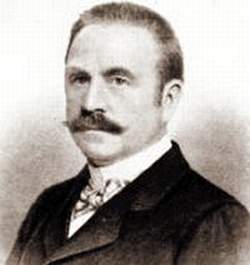
When Harry Thaw returned to America, he naturally assumed that his wealth and privilege would give him the same adulation he’d been buying in Europe. However the social lions of New York were unimpressed by his fortune, and well aware of his reputation. If he had simply been a ladies man, that would have been nothing. Even his foibles would have been forgiven, if he’d had the charm to smooth over them. (As it was they earned him the nickname of “Mad Harry” in New York’s red light district, which was known as the Tenderloin.) But Harry was inelegant. Harry was arrogant. Harry was No Fun, and so Harry was blackballed from almost every club in New York. Of course, Harry himself didn’t blame his reputation and erratic behaviour for this – even after the Union League Club, one of the few that accepted him, expelled him for riding a horse into the club foyer. Harry knew exactly who to blame – Stanford White.
Stanford White was everything Harry wished he could be – popular and respected, despite his reputation for liking his women a great deal younger than was generally considered respectable. Stanford was the son of a Shakespearean scholar who left his son no fortune, but who did give him a vast array of contacts in the New York artistic and social spheres. This allowed him to become the apprentice of Henry Hobson Richardson, the premier architect in America. Stanford was an eager and gifted student, and after six years learning from Richardson (and an extended sabbatical touring Europe) White and two friends set up their own firm in New York. Notable creations of White included Madison Square Gardens (the second building on the site to bear that name, which was then replaced again in 1925) and the triumphal arch in Washington Square that was raised in 1889 for the centennial celebration. It was Stanford’s great talent, wit, flamboyance and charm that allowed him the social status that Harry was denied – even though Stanford was guilty of deeds as dark as Harry’s.
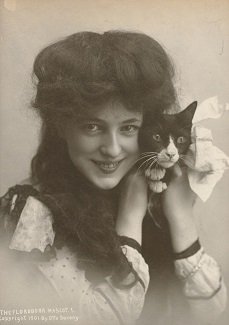
Stanford’s conduct with women can be easily demonstrated in how he treated a woman who will play a pivotal role in our story – Evelyn Nesbit. Evelyn (born Florence Evelyn, and named after her mother Evelyn Florence) was a young teenager (possibly as young as 14 in 1901, and certainly no older than 16) who became famous around the turn of the century as one of the most popular models in the city, first as an artist’s model and then as a photographic one. She starred in posters and calendars for companies like Coca Cola, and appeared on the cover of Vanity Fair and Harper’s Bazaar among others. Some consider her America’s first “pin up” girl. In July 1901 she became a chorus girl on Broadway in the musical Florodora, and it was here that she caught Stanford’s eye. The forty-seven year old’s interest in her at first seemed patron-like, almost paternal, as he showered her with gifts and arranged for her mother and brother to move with her into a hotel suite at the Wellington Hotel. He invited her to visit his apartment above FAO Schwarz on 24th Street, along with her friend Edna Goodrich and another man. The apartment was lushly decorated throughout. In one room, designed to resemble a forest clearing roofed by green branches, Evelyn was seating in a red velvet swing that was attached to the ceiling. Stanford pushed her as she swung higher and higher, and she thought the evening was delightful. A few weeks later, Stanford persuaded Evelyn’s mother to go to Pittsburgh to visit relatives and leave Evelyn in his care. That night, he invited her over to the apartment again in order to have a set of photographs taken.
By Evelyn’s later account, after the photography session was complete and the photographer had left Stanford showed her another room in the apartment, entirely walled with mirrors. While she marvelled, he gave her a glass of champagne. The champagne may have been drugged, or she may simply have drank more than she could tolerate. However it happened, Evelyn passed out. She woke up naked in bed next to a sleeping Stanford. When she saw the blood on the sheets from her lost virginity, she “screamed and screamed and screamed”. In a hideously sinister touch, Stanford comforted her:
Don’t cry, Kittens. Please don’t cry. It’s all over. Now you belong to me.
Stanford’s overbearing personality persuaded Evelyn to keep his actions secret, and he managed to dominate her into becoming his (discreet) mistress. She later referred to him as a “benevolent vampire”. [1] The following year, in 1902, she met and was romanced by John Barrymore. Barrymore, who would become in later life a legend, had yet to become an actor and was working as an artist. The two became intimate, and Barrymore later referred to her as “the first woman I ever loved”. He even proposed marriage to her – while both her mother and Stanford were present. Evelyn said no (one of her greatest regrets). Stanford, of course, was outraged by this younger rival, and arranged for Evelyn to attend a boarding school in order to separate them. Evelyn’s mother also disapproved of the relationship, seeing Barrymore as a penniless ne’er-do-will without any prospects.
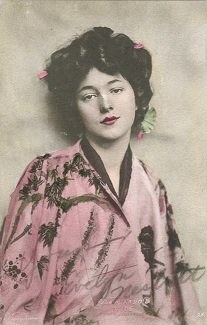
To Harry Thaw, Evelyn represented everything that Stanford White had and he did not – the most beautiful girl in New York. He made an attempt to court her while she was starring in a play called “The Wild Rose”, which he went to see some forty times. He sent her gifts, and managed to arrange to meet her under the name of “Mr Munroe”. Rich admirers who gave you gifts were both a hazard and a benefit of being an actress, and Evelyn seems to have regarded Harry as just another eccentric. When he made his grand revelation of being, in truth, “Harry Kendall Thaw”, she seems to have blown off his drama. Stanford (who by this time had moved on to pastures new) is said to have warned her of Harry’s “eccentricities”, but sadly not in specific enough terms to have an effect. When Evelyn was hospitalised in the summer of 1903 (allegedly with appendicitis, though rumour said it was due to a botched abortion) Harry had his chance to emphatically insert himself into her life. His cultured manner and generous gifts impressed Evelyn’s mother, and unlike Barrymore his fortune convinced her he would be a good match. Evelyn was, for the moment, undecided.
When Evelyn was discharged from hospital, Harry managed to convince her and her mother that a European vacation would help her recover. In truth what he had planned was a tightly plotted psychodrama, the first step of which was to alienate the two women from each other. He tired them out with a demanding itinerary, he encouraged their bickering, and eventually when Mrs Nesbitt demanded to go back to America he left her in London and took Evelyn to Paris. There he began once again to try to persuade Evelyn to marry him, and in an effort to dissuade him she told him that she was not a virgin. This enraged Thaw, though he would have to have been deliberately blocking out the facts not to realise it. He managed to get the entire story of Stanford’s rape out of her over the course of their Paris stay, using it to condemn Mrs Nesbitt as neglectful. [2] The trip continued after this revelation, though it began to take a darker turn. Harry rearranged his itinerary to have it take in sites associated with virgin martyrs, most notably Joan of Arc. [3] In a visitor’s book at Domrémy, Joan’s birthplace, Harry wrote in a visitor’s book:
She would not have been a virgin if Stanford White had been around!

The trip continued through Holland and into Germany, with Harry giving their name to strangers as “Mr and Mrs Dellis”. Eventually the trip concluded at Katzenstein Castle, in the southern part of the German Empire. It was an isolated castle, and Harry hired three servants to take care of them (though their rooms were on the other end of the castle from Harry’s and Evelyn’s). On their second day in the castle, Harry “in a dreadfully excited condition” attacked Evelyn with a whip, beating her severely. (Evelyn’s later account makes no mention of any sexual assault, though this may have been delicacy on her part. His conduct here would definitely match that which he was infamous for among the prostitutes of New York.) The next day he repeated the assault, wounding Evelyn (who was still recovering from the injuries that had hospitalised her in America) so severely that she was bedbound for three weeks. Once she recovered they left the castle and continued south to the Italian border, and then west through Switzerland. At some point in Switzerland Evelyn made some remark that Harry thought disrespectful, so he took her to her room and beat her so severely that she screamed. His abuse continued once they returned to Paris, and it was there that she realised how heavy his use of cocaine was. Under duress she wrote to her mother, who had returned to New York. When Mrs Nesbitt arrived in Paris, Harry gave her the “good news” – that they were engaged. Eventually Evelyn managed to get back to New York, whereupon she swore out an affidavit describing his assault on her, and claiming that he had tried to force her to sign a complaint against Stanford White for raping her. (In the affidavit she describes that as a lie, which some point to as supporting later claims that it was Stanford White who had pressured her to swear the affidavit.)
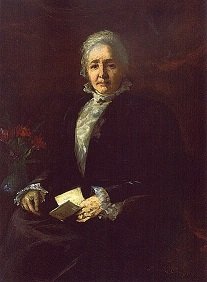
Evelyn told her friends about what had happened in Europe, and it was now that she found out the stories of Harry’s previous behaviour. Yet somehow, incredibly, Harry managed to work his way back into her life. It helped that Evelyn was financially and emotionally on pretty thin ice – work was drying up, her mother had remarried and cut Evelyn out of her life after the London fiasco, and the reputation she had gained from being Stanford White’s mistress meant that her chance of making a respectable marriage was slim. Harry, for his part, was contrite. He blamed his behaviour in Europe on rage at “the Beast”, Stanford White. In a sick twist, he assured Evelyn that “he forgave her”. Worn down by his attentions, Evelyn gave in. The two were married in April 1905. Harry chose Evelyn’s dress – not virgin white, but black. An ill omen for the marriage, as it would turn out. The Thaws moved to Harry’s family home in Pittsburgh, which Harry’s mother ruled with an iron fist. Evelyn found herself trapped in their conventions of “proper wifely behaviour”, with a husband who treated her like royalty in public, and abused her in private. Ironically her escape would come from that same husband – or rather, from his paranoia.
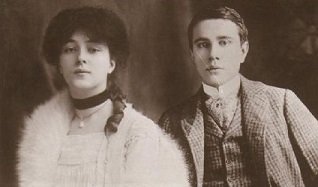
Harry’s drug use had continued, and his mental state was becoming more unhinged. He was convinced that Stanford White had hired mobsters to follow him, and to kill him if they had a chance. For his own “protection”, he had started to take a gun with him whereever he went. It was the perfect setup for tragedy, and on June 25th 1906 it came to its inevitable conclusion. Harry and Evelyn were on a rare visit to New York, as a stopping off point before heading to Europe on holiday. [4] Harry got tickets for himself, Evelyn and two of his friends to a performance in the rooftop theatre at Madison Square Gardens, and it was noted there that despite the heat Harry refused to remove his coat. In fact New York had driven his paranoia to fever pitch, and he was carrying his pistol. Of course, Stanford White had a regular table permanently reserved at the theater he had himself designed, and at around 11pm he and a young actress arrived and sat down. Evelyn saw them arrive, and reportedly passed Harry a note telling him. Perhaps she hoped that forewarning him would prevent an outburst. Harry made to approach Stanford’s table, but drew back before reaching him. He repeated this several times before he managed to build up enough courage to do what he intended to do – fire three shots into Stanford’s back and head, killing him instantly.
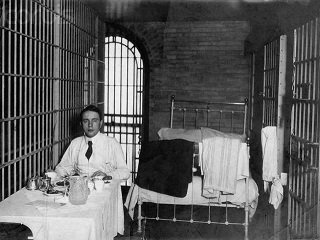
Harry was immediately disarmed by a fireman in attendance and taken into custody. The policeman who arrested him asked him why he did it, and Harry replied “Because he ruined my wife”. Evelyn asked him “What have you done?” and Harry replied “I have probably saved your life”. He was taken to prison and denied bail, though the fortune of a man like Harry Thaw meant that this was hardly the same sort of experience as “normal” people. A photo of him in prison shows him wearing his own clothes eating a meal prepared in a restaurant, with an actual bed behind him. His spirits matched his luxuries – he was reportedly happy and upbeat, convinced that the world would see him as a hero for killing Stanford White.
The newspapers, of course, went crazy. The killing of a celebrity like Stanford by a millionaire like Harry Thaw, with the added bonus of the sexual element added by Harry’s remarks at the scene – it was perfection. As preparations for the trial began, both the defence and prosecution used the press to try to gain an advantage, with stories aimed at portraying both Stanford and Harry as monsters. Of course, in both cases they had little distance to go. The Thaw camp were at a disadvantage in terms of the actual facts, but Mama Thaw had years of experience in covering up her son’s foibles. Still, some of the newspaper reports became so lurid that they were warned they risked prosecution for sending obscene material through the mail. The whole story may also hold the distinction of being the first murder to be sensationalised on film as well as in print – within a week Thomas Edison had released a film version of the incident, Rooftop Murder.
Harry’s defence was not guilty due to temporary insanity, the same defence as used successfully by Daniel Sickles nearly fifty years earlier. This “temporary insanity”, they said, was caused by the sudden sight of Stanford. The prosecution tried to disprove that by showing premeditation, claiming that Harry had to have known Stanford would have shown up at the theatre. The trial devolved in a verdict on the character of the two men, and Evelyn’s evidence may have been crucial. It’s generally accepted that she had been promised a payoff from the Thaw family in exchange for her testimony, and she decided to take the deal. She testified on the stand to Stanford having raped her, while claiming that the affidavit she had sworn against Harry for his actions in Europe had been forced from her by Stanford’s attorney. In the end, the result was a hung jury. Seven jurors voted guilty and five voted not guilty, meaning that the decision was too split to give a legal verdict. Harry was outraged at the result, and reportedly threw a temper tantrum in court. In the second trial the defence made a more nuanced plea of severe manic depression, with the murder having taken place during a manic episode. [5] This time their plea was successful, and after the verdict the judge ordered that Harry be indefinitely confined in the Matteawan State Hospital for the Criminally Insane.
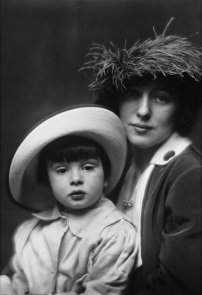
Harry’s attempts to have himself declared sane began almost immediately, though his first attempt wound up becoming even more extreme tabloid fodder. The state managed to find evidence and witnesses to show Harry’s abuse of prostitutes in New York in the years leading up to Stanford’s murder. The incidents, from 1902 to 1905, covered the period both before and after his discovery of Stanford’s treatment of Evelyn, demolishing the argument that it was this which had triggered his illness. The tabloids, of course, were more interested in the lurid details – the “jeweled whip”, and the thirty thousand dollars in payoffs that Harry’s lawyer had arranged to silence the women who had been left permanantly injured by Harry’s abuses. In August 1910 the judge ruled that Harry would be a danger to the public if released, and had him returned to Matteawan. The same year Evelyn gave birth to a son, Russell William Thaw. Evelyn had been cut lose from the Thaw family (with a $25,000 parting payoff) after the trial, but she claimed that Russell was the result of a conjugal visit to Harry. Harry always denied this, and refused to acknowledge the boy. The truth of the matter remains unknown.

In 1913, tired of attempting to gain his release through conventional means (and finding the superintendent of Matteawan impervious to bribery), Harry escaped from the asylum and fled north to Canada. His mother almost certainly arranged the whole thing. He fought against extradition, and eventually managed to get an agreement to a new trial as a condition of his return. There he was declared not guilty, and no longer insane. In July 1915 he was released to a cheering crowd who had been primed to lionize him by Mama Thaw’s publicity campaign, which had included songs, a play, and a musical all praising him for defending his wife’s honour. As one newspaper of the time remarked:
In all this nauseous business, we don’t know which makes the gorge rise more, the pervert buying his way out, or the perverted idiots that hail him with huzzas.
Harry’s freedom didn’t last long, though long enough for he and Evelyn to finalise a divorce. In December 1915 in Long Beach California he met a nineteen year old named Frederick Gump who came from Kansas and over the course of a year persuaded the young man’s family to send him to New York, claiming that he would finance a scholarship for him at the Carnegie Institute. Instead on Christmas Eve he attacked Frederick with a whip, beating him before sexually assaulting him. The next day, Christmas Day, the young man managed to escape. He fled back to Kansas and his family. They eventually managed to get the story of what had happened out of him. His father, a respected local man, went to the police. Once the New York police had corroborated Frederick’s story, a warrant was issued for Harry’s arrest. Eventually he was arrested in Philadelphia where the police found him attempting (and failing) suicide by cutting his own throat. After a swift trial, with no public support for the defendant, Harry was found guilty. [6] Harry was sent to the Kirkbride Asylum in Philadelphia. This time, he was given no opportunity for escape.

It wasn’t until 1924 that Harry was finally released. This time he does appear to have been cured, or at least to have his impulses in check. In the intervening period Evelyn had appeared in five films based on her relationships with Stanford and Harry, as well as publishing two memoirs. She and Harry met in 1926, leading some newspapers to speculate they might reunite. However nothing ever came of it. Also in 1926 Harry published his own memoir, The Traitor. A rambling and poorly written mess, it aims to portray Harry as a hero who saved countless girls from future assaults by Stanford White. The “traitor” of the title is not Stanford, or Evelyn, but rather the defence attorney whose cowardice in entering an insanity plea denied Harry the vindication he felt he deserved. Of course, Katzenstein Castle, the ladies of the Tenderloin, and Frederick Gump make no appearance in the book.
Harry made an attempt to break into the movie industry in the 1920s, but it proved fruitless. He died in 1947, aged 76, of a heart attack. In his will he left nothing to Russell, now a decorated World War II pilot. To Evelyn, who was now working an an art teacher, he left $10,000 out of the million dollars he had remaining. Coincidentally this was the same amount she received in 1955 for acting as an advisor on The Girl In The Red Swing, a movie based on the triangle between her, Stanford and Harry. She was played by Joan Collins (after Marilyn Monroe refused the part), Stanford by Ray Milland, and Harry was played by Farley Granger. It was interesting casting – Milland was best known for The Lost Weekend, where he played an alcoholic writer, while Granger was most closely associated with his role in Strangers On A Train, Hitchcock’ tale of opportunistic murder. Both are portrayed as abusers of Evelyn, which makes it one of the more accurate depictions of the story. Perhaps that gave her some satisfaction. She died in 1967, having never quite escaped the shadow of her ex-husband, the man who claimed to have killed for her. Though one suspects that with Harry Thaw killing was never a matter of why, but simply when.
Images via wikimedia and Murderpedia except where stated.
[1] It should be noted that Evelyn did give different accounts of her relationship with Stanford White, though at the very least he was guilty of getting her drunk and then taking advantage of her when she was unable to resist.
[2] This led to later allegations that she had concocted the story in an attempt to calm Harry down.
[3] Gilles de Rais would probably have been closer to Harry’s temperament.
[4] Europe seems to have had some significance for Harry as a place where he could indulge in the darkest of his urges. Evelyn might have been grateful that they never actually made it on that trip.
[5] This seems to have been a last resort, as Mama Thaw was eager that her family should not be labelled as being subject to hereditary insanity. Though it does seem, based on the family history, as though they actually did have a predisposition to mental illness.
[6] Unlike his previous trial, this time the newspapers seem to have found the story far too scandalous to cover except in vague terms.
